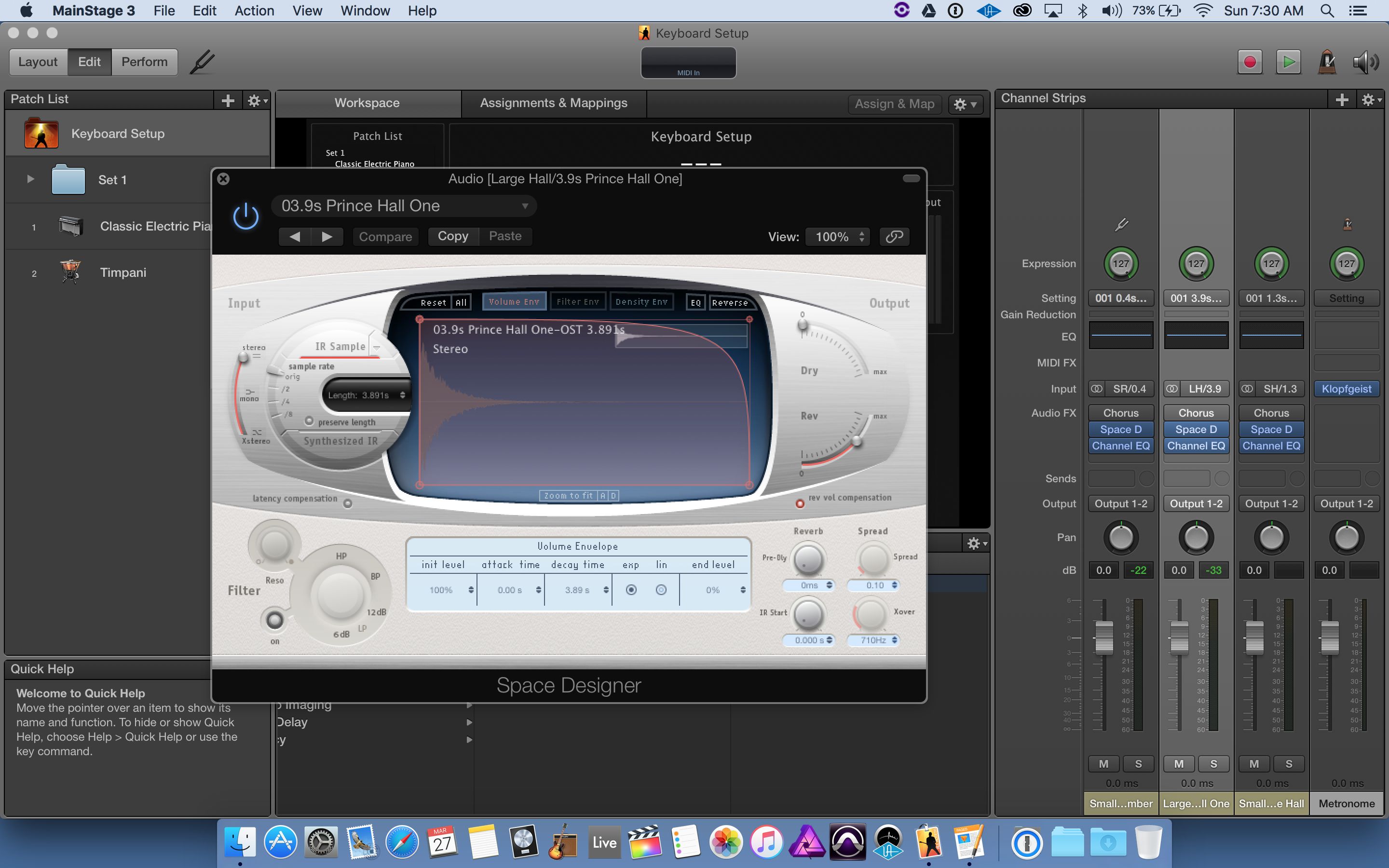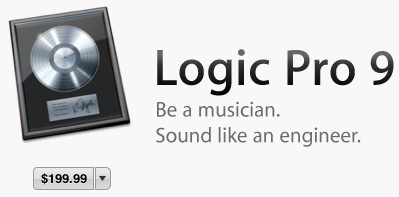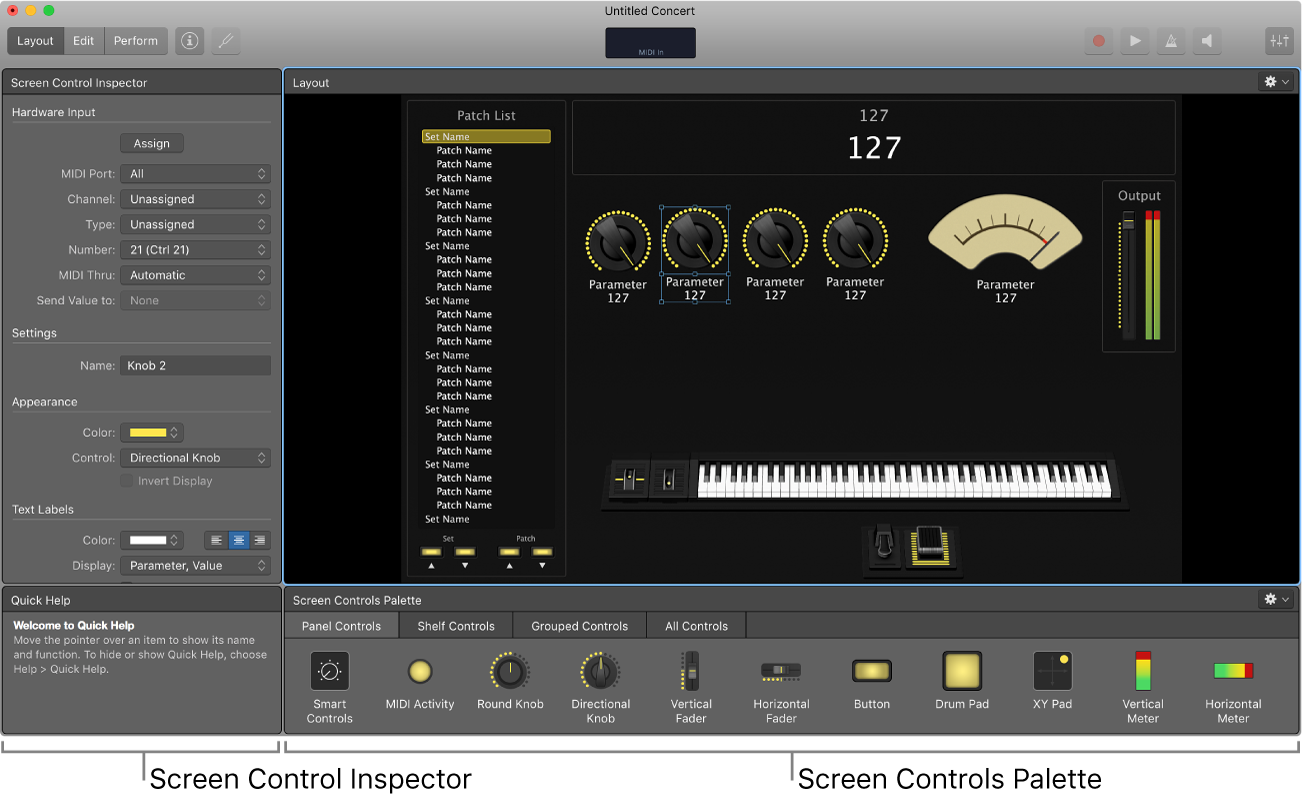

You might prefer to have the freedom to launch parts of the song off in a single-shot, like you can with scenes in Ableton Live. Launching Mainstage Markers like Ableton Live Scenes With every song change, the sound will update. This will make playing a lot easier for the drummer/keyboardist, as he/she will not need to constantly push buttons to change to the desired sound.
APPLE MAINSTAGE UPDATE
You can then update every patch (song) to be a different keyboard sound and/or drum sound. You can use a third-party plugin here as well, if you like a particular program’s sounds. Configure a separate “Keyboard” output for this sound so that the mixer can mix it independently of other tracks.


This output will be dedicated to your electronic drum sounds that the drummer will play live, in time, like real drums.Ĥ) In the second track, select any of the synth plugins to be your keyboard sounds. Set the output to be a separate output from your click/ backing tracks. You can then select a drum kit to use or drop your own samples in to correspond to MIDI notes received from the drum pads.
APPLE MAINSTAGE SOFTWARE
You want to start generating all your keys/synth sounds as well as electronic drum sounds using Mainstage.ġ) In addition to your tracks configured with the Playback Plugin (for click, cues, and loops), create a new software instrument track on every patch to correspond to your keyboard and a separate track for electronic drum sounds.Ģ) Connect your keyboard to one input of a MIDI interface and your drum pads/ triggers to a separate input.ģ) In the two tracks you created, set one track to be an Ultrabeat plugin. You are already using Mainstage to run your clicks and loops. This will limit, though, your band’s use of the loops and give you less opportunity to be impromptu in the flow and direction of your songs.Ĭhanging Keyboard and Drum Sounds with Every Song Change Another band member would have to guess or be constantly expecting a roadmap change through the leader’s cues mid-song.Īll in all, you can certainly get away with having other band members run the loops. With a foot controller, you can much easier navigate a song through various markers, repeat a marker indefinitely, or kill a loop if things are going off. Even if someone else is vocally leading a specific song, you are still the set leader and can take a song in any direction. The main reason for this is that no one knows the songs/ set like you do. Advantages – You can do MUCH more by running loops as the front man with a foot controller.Complexity – If you set up your foot controller correctly, it does not have to be complex! You can make it as simple as having one button advance to the next song and automatically begin playback (Mainstage setting: “Start on Patch Change.”) So, at the end of song, you press the bottom right button and the next song cues up and plays immediately.However, this one-time cost can result in longer product life and will make loops much easier to incorporate into your set. Cost – Yes it’s true that a MIDI foot controller can cost more than its finger-pushing equivalent.I can hear you on these points and more, but at least let me get my thoughts in on this one: “You can do more with loops if someone else runs it who has less to do.”.“I have enough to think about to be adding another thing to do…”.“MIDI foot controllers are more expensive!”.Whenever possible, you (the front-man) should always run your loops from your feet! This is easier said than done, and you may have found yourself with one of the following excuses:


 0 kommentar(er)
0 kommentar(er)
